Exploring the Evolution of the Ford F100 (1953-1983)

The Ford F100 is one of the most beloved and iconic trucks in automotive history. From its humble beginnings as a utilitarian workhorse to its eventual status as a cultural symbol of rugged Americana, the F100 served a pivotal role in shaping the modern pickup truck. From 1953 to 1983, the evolution of the F100 reflects the broader changes in consumer preferences, technological advancements, and the shifting landscape of the automotive industry.
The Beginning (1953-1956) – First Generation

1953 – The Ford F100 is Born
1953 was significant for Ford. Not only was it the company’s 50th anniversary, but it also marked the birth of a new era in truck design. Ford replaced its original post-war F1 model (also known as the Bonus-Built) with the F100, a modernized pickup with popular features that set it apart from its predecessor.
Ford designed the first-generation F100 to meet the growing post-WWII demand for durable trucks that could be reliable work vehicles and comfortable everyday drivers. The F100 featured a wider, more comfortable cab, more compliant suspension, longer wheelbase and more powerful engine options than the outgoing F1. The truck’s new design also offered a more robust frame and increased payload capacity, making it more appealing to a wider range of customers, from business to personal use.
1956 – The Iconic One-Year Design

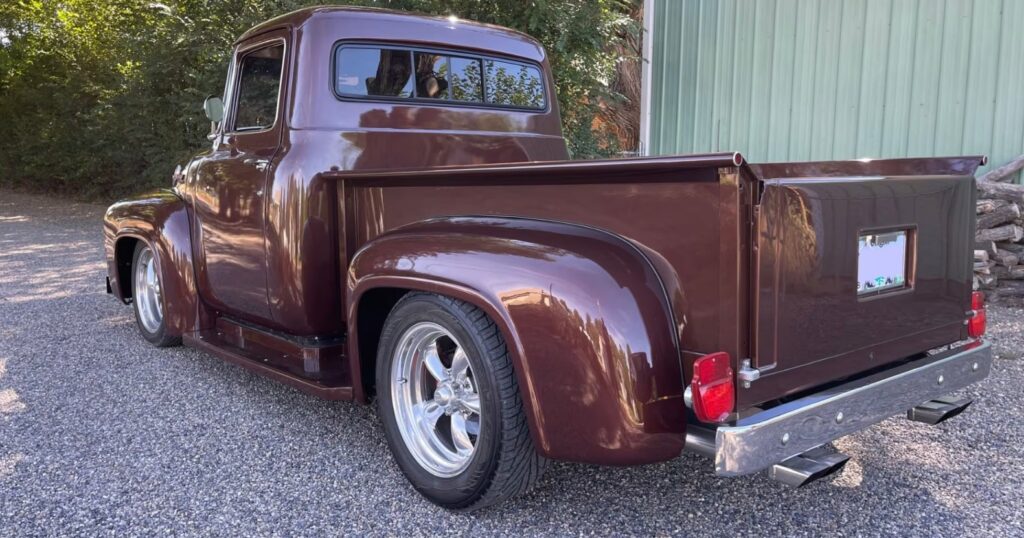
By 1956, Ford introduced one of the most sought-after designs in the F100’s history. This model featured a wraparound windshield, wider doors, and an optional panoramic rear window. These changes gave the truck a sleeker, more modern look, improving visibility and overall functionality.
Performance-wise, the 1956 F100 was a powerhouse, offering a “Power King” Y-block V8 engine that made it a capable work truck and one of the better-performing pickups of its time. The 1956 model has become an icon, often sought after by collectors due to its distinct design and rarity as a one-year-only style.
The 1960s: Shifting to Modernity (1961-1966)
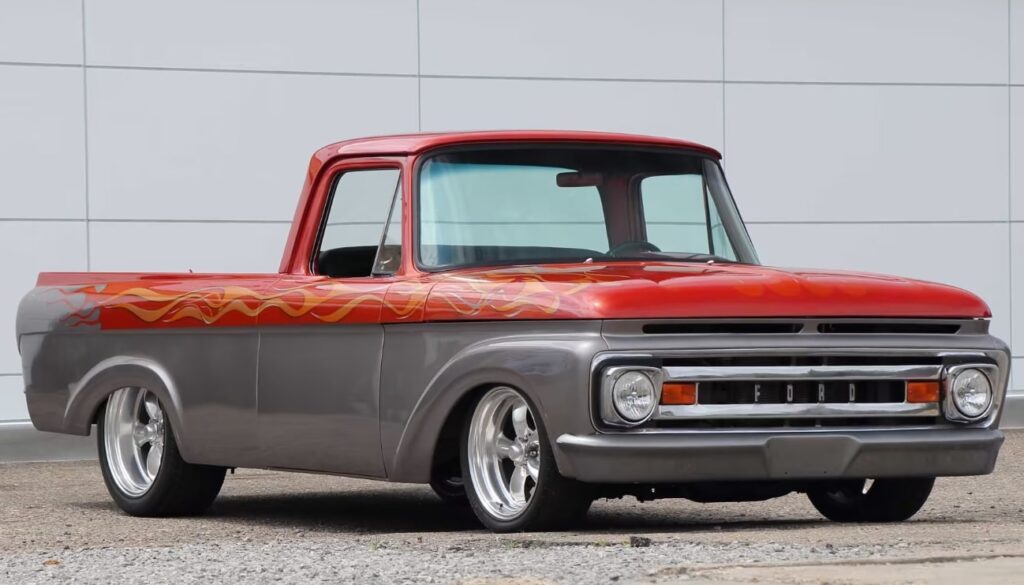
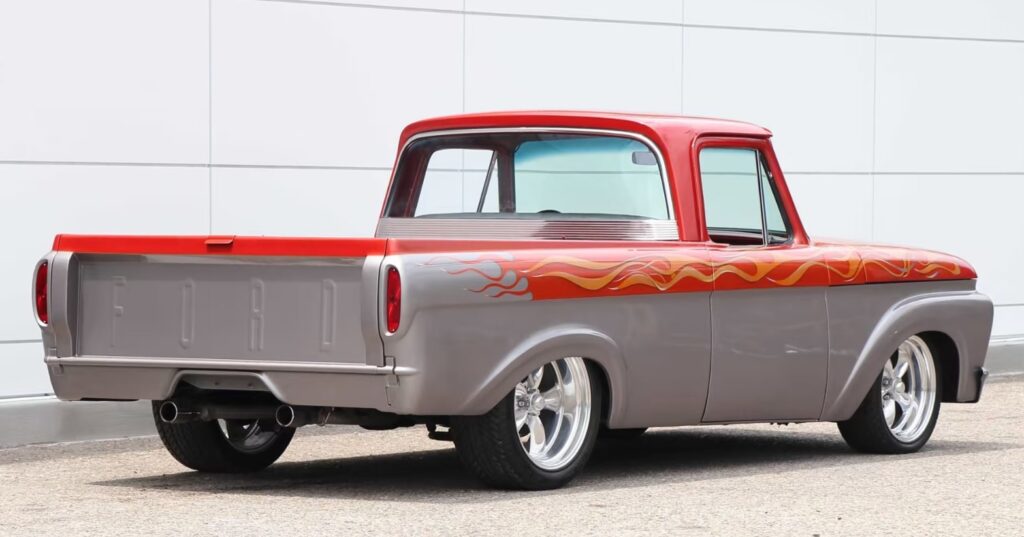
1961 – The Unibody Era
The 1960s brought more experimentation with design and functionality. In 1961, Ford introduced the unibody design for its F-Series trucks, including the F100. This “integrated body” design combined the cab and bed into a seamless piece. The goal was to create a more car-like appearance with a smoother, sleeker profile.
While visually appealing, the unibody design had some structural drawbacks. Complaints about flexing and potential structural weakness led Ford to abandon the unibody concept by 1963. However, the 1961-1962 unibody F100 remains a unique chapter in the truck’s history, marking Ford’s willingness to push design boundaries.
1965 – Twin I-Beam Suspension
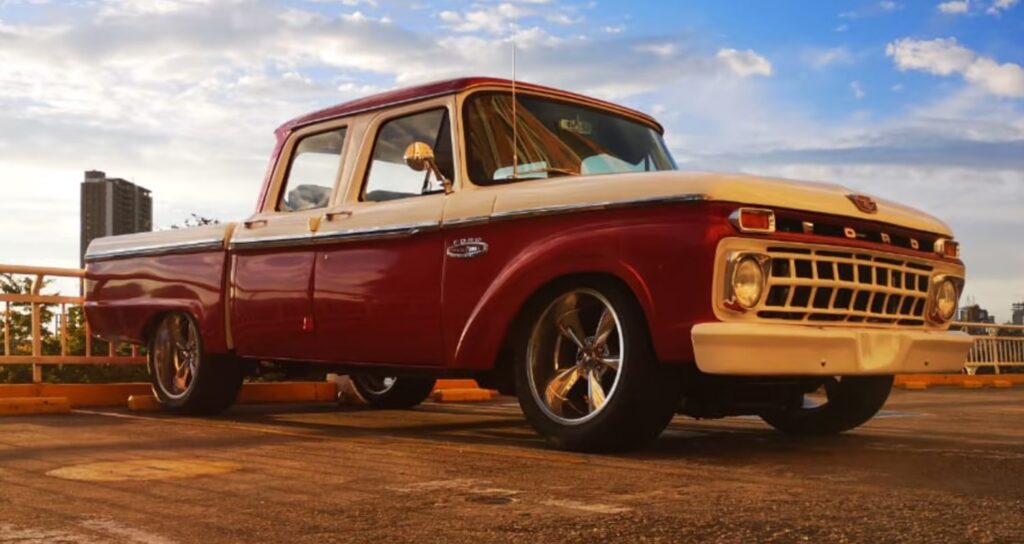

In 1965, Ford introduced a new frame design with Twin I-Beam front suspension, an innovative and rugged suspension system allowed each front wheel to move independently, resulting in a smoother ride and better handling, especially on rough roads. The Twin I-Beam suspension became a hallmark of Ford trucks, staying in use for decades.
This period also saw design refinements to the F100’s exterior, with a more rugged-looking front grille, updated headlights, and improved interior comfort. Introducing larger, more powerful 352 ci in (5.8 L) V8 engine options further enhanced the truck’s appeal to a broader audience, particularly those using it for work and recreation.
The 1970s: Power and Popularity (1967-1979)
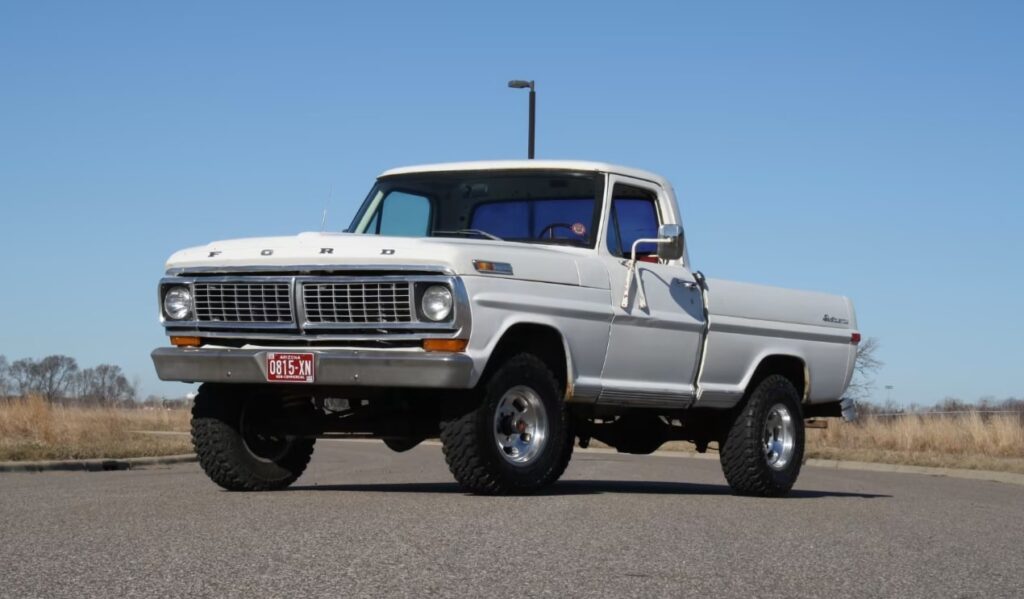
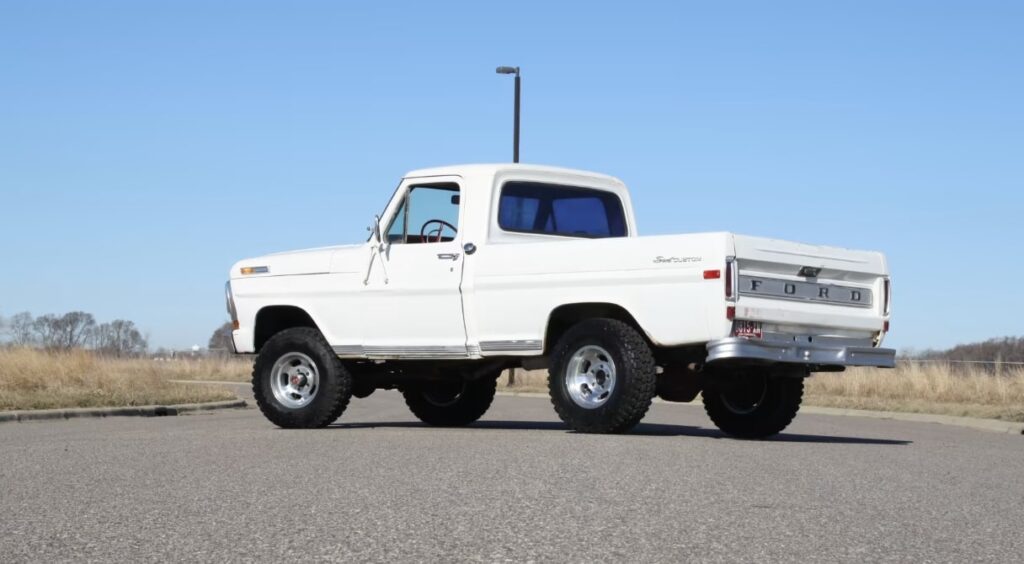
1967-1972 – Second Generation of Growth
By the late 1960s, the F100 had evolved into a larger vehicle, reflecting the changing role of pickup trucks in American culture. The 1967-1972 models offered sharper styling, increased payload capacity, and more engine options. This era also marked the growing popularity of pickups as not just work vehicles but as lifestyle choices, appealing to families and recreational users alike.
Ford responded to this demand by offering more car-like features in the F100, including a wider cabin and optional power steering, air conditioning, and upgraded interiors. Under the hood, buyers could choose from several powerful engines, including the 360 and 390 cu in V8s, which provided ample power for towing and hauling.
1973-1979 – Rugged Durability
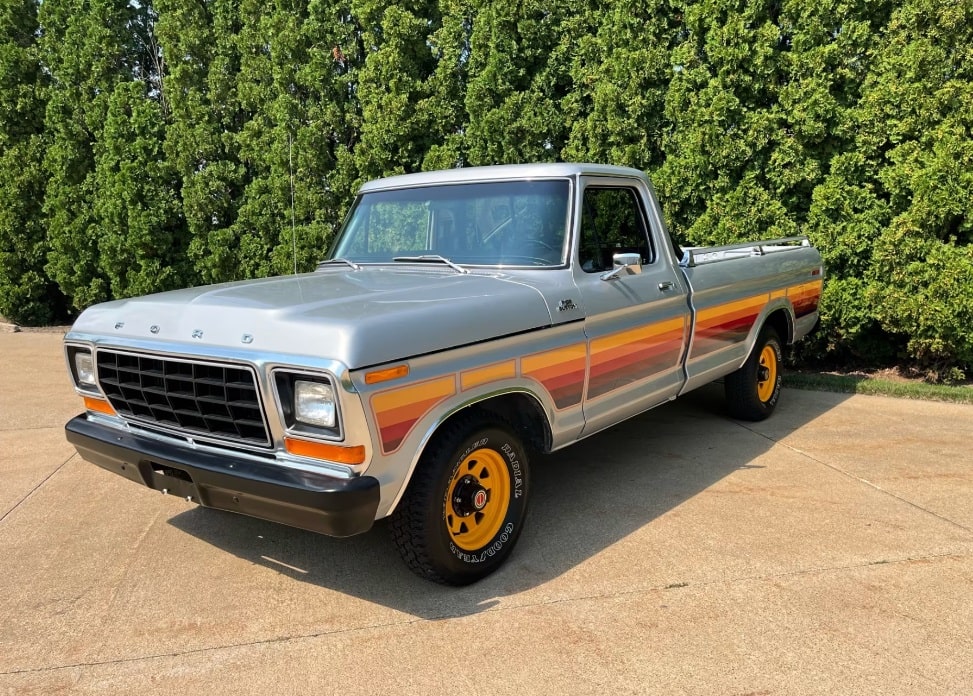
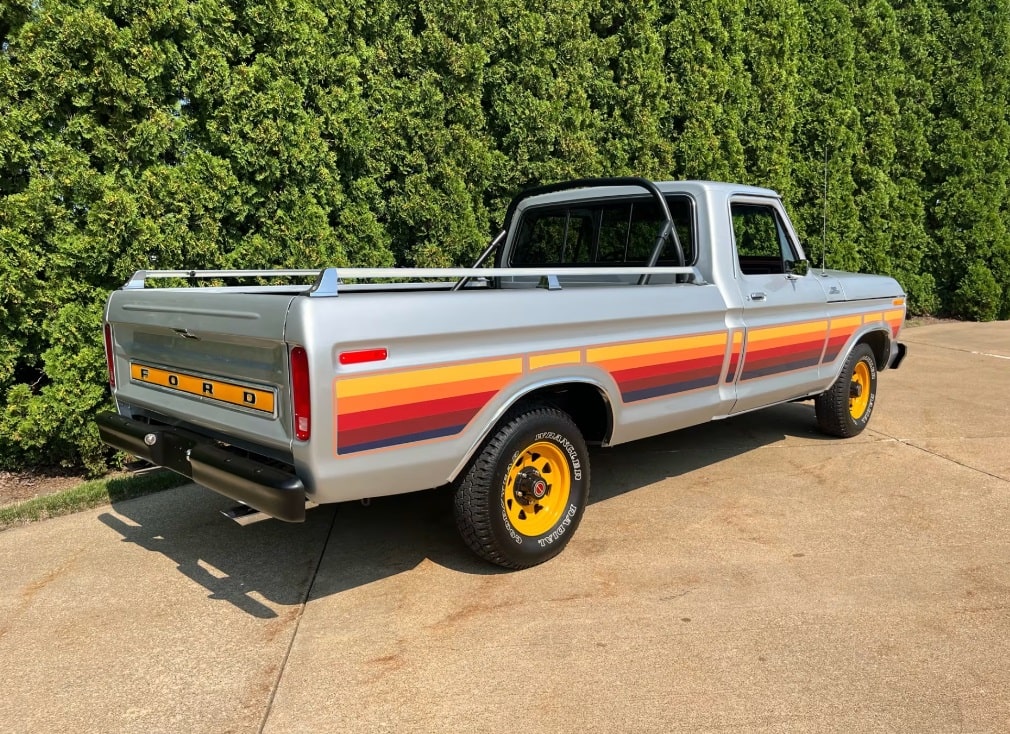
The 1973 redesign emphasized durability and toughness, key traits defining the F100 for the rest of the decade. This period saw Ford competing heavily with Chevrolet’s popular C/K trucks, and as a result, Ford configured the F100 to be more rigid, reliable, and capable.
Ford introduced safety innovations during this time, including standard front disc brakes, seat belts, and larger fuel tanks for longer driving ranges. These trucks became symbols of American resilience, featured in popular media and embraced by a generation that valued rugged, no-nonsense vehicles.
The 1970s also saw the rise of the Ford F100 as a cultural icon, with the truck appearing in movies, television shows, and advertisements as a symbol of hard work, reliability, and freedom.
The End of an Era (1980-1983) – The F100’s Farewell

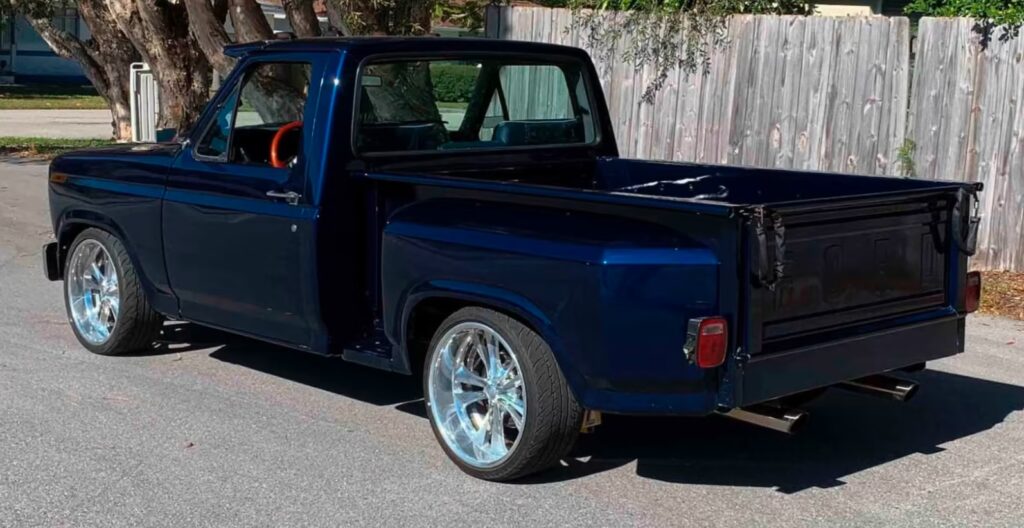
1980 – A New Design Philosophy
As the 1980s began, Ford significantly redesigned the Ford F100, opting for a boxier, more angular look that improved aerodynamics and fuel efficiency. This reflected broader changes in the automotive industry, particularly in response to the oil crisis of the late 1970s. Ford introduced more fuel-efficient engine options, including six-cylinder engines that catered to customers looking for better fuel economy without sacrificing utility.
The interior of the 1980s F100 also saw significant upgrades, with a greater focus on driver comfort, convenience, and modern amenities like improved climate control and ergonomic seating.
1983 – The Final Year
By 1983, the F100’s long and storied run was ending. Ford decided to focus on the F150, which had proven to be more popular and better suited to truck buyers’ changing demands. Ford discontinued the F100 after 1983, but its legacy lived in the F-Series, which would become America’s best-selling truck.
The Legacy of the Ford F100
Though the Ford F100 ceased production in 1983, its influence on modern trucks is undeniable. Ford introduced many innovations with the F100, such as the Twin I-Beam suspension, and its focus on ruggedness and comfort laid the groundwork for the success of the F-Series that followed.
Today, the F100 is highly sought after by collectors and restorers, especially models from the 1956 and 1970s eras. These trucks represent a piece of Americana, capturing the spirit of a time when vehicles were built to last and designed with a sense of purpose.
Conclusion

The Ford F100’s evolution from 1953 to 1983 is a story of innovation, adaptability, and enduring appeal. From its early years as a simple work truck to its later role as a cultural icon, the F100 left an indelible mark on the automotive world. Today, it is a testament to Ford’s ability to create vehicles that resonate with generations of drivers.
As enthusiasts and restorers continue to celebrate the legacy of the Ford F100, modern suspension upgrades are a key component in bringing these classic trucks up to today’s handling standards.
Aldan American offers high-quality suspension components specifically designed for the Ford F100, including adjustable coilovers and shock absorbers that enhance ride quality, handling, and performance. Whether restoring a 1956 classic or upgrading a 1970s model, these suspension components provide a smoother, more controlled ride, ensuring your F100 remains a functional and iconic piece of automotive history.
-
Coilover Kit – Ford F-100 1953-1983 Front
Price range: $1,273.99 through $1,330.99 This product has multiple variants. The options may be chosen on the product page




